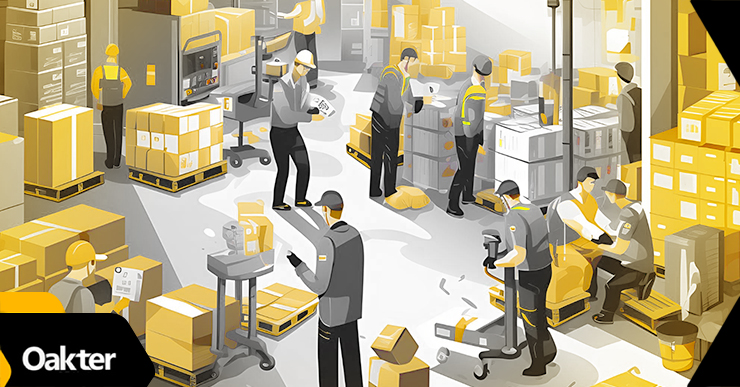
How Electronic Assembly Manufacturing Can Help Boost Business Efficiency
Because modern industry is always growing and evolving, there is also a constant drive for more efficiency. Hence, companies are continuously looking for innovative methods to streamline their operations, cut costs, and improve the quality of their products.
One crucial area in the pursuit of business growth and development is electronic assembly manufacturing. Over the years, it has significantly transformed how businesses operate.
In the Indian scenario, the electronics manufacturing industry, on the whole, is growing at a rapid rate and has more than doubled from $30 billion in 2014-15 to $75 billion in 2019-20.
With adequate support from the government, it is expected to increase to $250 billion by 2025.
In this blog post, we will delve into the rapidly evolving world of electronic assembly manufacturing and explore how it helps to improve and boost business efficiency.
What Exactly Is Electronic Assembly Manufacturing?
Simply put, electronic assembly manufacturing is a process that involves the assembly of electronic components onto printed circuit boards (PCBs) or other substrates to create functional electronic devices or systems.
It involves many techniques, from surface mount technology (SMT) to through-hole assembly, and utilises state-of-the-art equipment to perform precise soldering, inspection, and testing. The result of this type of manufacturing is perfectly crafted electronic products that meet even the highest industry standards.
Electronic assembly manufacturing plays a crucial role in creating electronic devices, components, and various systems that boost the efficiency of many industries- from consumer electronics to aerospace and automotive sectors,
How Does Electronic Assembly Manufacturing Boost Business Efficiency?

Here are a few areas in which assembly manufacturing can positively impact productivity:
1. Cost-efficiency
When it comes to boosting business efficiency, one of the first things considered is cost-efficiency. Electronic assembly manufacturing plays a vital role in bringing down costs. The automation of assembly reduces the need for manual labour; this is especially beneficial for small industries as it requires fewer human resources.
It also minimises the risk of human error since most of the assembly is done by machine and uses automated quality control processes to identify defects early in the production cycle. This also lessens the need for costly re-work or recalls, saving time and money.
In addition, automated machinery can function around the clock, increasing production rates and, in turn, reducing labour costs.
2. Decreases turn-around time
In the fast-paced world of business, the ability to respond quickly to changing market scenarios is critical, and electronic assembly manufacturing allows for just that.
It allows companies to swiftly prototype new electronic devices, test them, and make the required adjustments. This agility allows businesses to bring new and innovative products to the market faster.
Also, it allows for scaling or reducing production as required. This helps companies meet market fluctuations and quickly adjust to changing demand without extensive retooling or additional labour.
Overall, it enables businesses to produce electronic products with exceptional speed and precision, giving them a competitive edge.
3. Boosts precision
Precision and consistency of electronic assembly manufacturing are critical to ensure a high-quality end product that satisfies customer demands and reduces the need for costly warranty repairs or replacements.
Precise component placement, soldering techniques, etc., result in minimum wastage of material. This aspect is critical when working with expensive materials or delicate components.
The process can also utilise just-in-time inventory management to reduce inventory holding costs. Therefore, the company can also react swiftly and effectively to sudden increases in demand.
4. Innovation
Innovation is critical for any business thriving in today’s competitive landscape. Electronic assembly manufacturing enables companies to stay ahead of the curve by adopting the latest cutting-edge technologies and processes, like integrating multiple functions onto a single PCB, reducing the complexity of electronic devices, and creating more portable electronic devices with miniature components and assembly techniques.
Embracing innovation can enhance a company’s product offering and allow businesses to meet new and evolving demands.
5. Strict quality control
Quality control is paramount in achieving business efficiency. Electronic assembly utilises various techniques to ensure the highest quality of electronic products.
In addition, automated optical inspection (AOI) and X-ray inspection are commonly used to identify defects like solder joint issues, component misplacements, and PCB damage. Early detection of these issues minimises costly rework and rejects.
Also, rigorous testing procedures help identify and rectify issues that may lead to product failures in the field, ensuring they have a longer lifespan.
High-quality standards ensure the products meet regulation standards and minimise the risk of costly customer complaints, warranty claims, legal issues, or recalls.
6. It contributes to environmental sustainability and responsibility
Today, every business operation is expected to be environmentally responsible. With electronic assembly manufacturing, there is a reduction in material waste because of precise assembly techniques and materials optimisation.
Many state-of-the-art facilities use energy-efficient machinery and technology, reducing energy consumption and greenhouse gas emissions.
In addition, electronic assembly manufacturing facilities often have robust recycling and waste management programs to responsibly dispose of or reuse materials and components, reducing their environmental impact.
These practices promote sustainable production practices and reduce a company’s environmental footprint.
Role of Human Intervention in the Assembly Manufacturing Process
Although automation and technology are crucial in electronic assembly manufacturing, nothing is possible without the human element. Skilled technicians and engineers are the driving force behind the success of this industry.
These highly skilled professionals are responsible for programming and maintaining the machinery and ensuring that processes run smoothly and efficiently. They are adept at solving issues that may arise during the manufacturing process. This helps to minimise downtime and maximise productivity.
Continuous improvement, innovation, and enhanced product quality in this sector are not possible without the expertise of experienced personnel.
Last words
Electronic assembly production is the driving force behind business efficiency in a constantly evolving environment.
It gives companies flexibility and competitive advantage by rapidly responding to market demands, prototyping new goods, and scaling production. It shows how human innovation and technical advancement can propel organisations to new heights.
Therefore, it is more than just a manufacturing process; the balance of human expertise with automated precision creates the formula to enable firms to be cost-efficient, rapid, precise, and inventive.
Today, electronic assembly production is no longer an option; it is a necessity, a powerful ally, and the secret of every successful business.
To find out how you can partner with us for cutting-edge electronic assembly manufacturing, get in touch!

